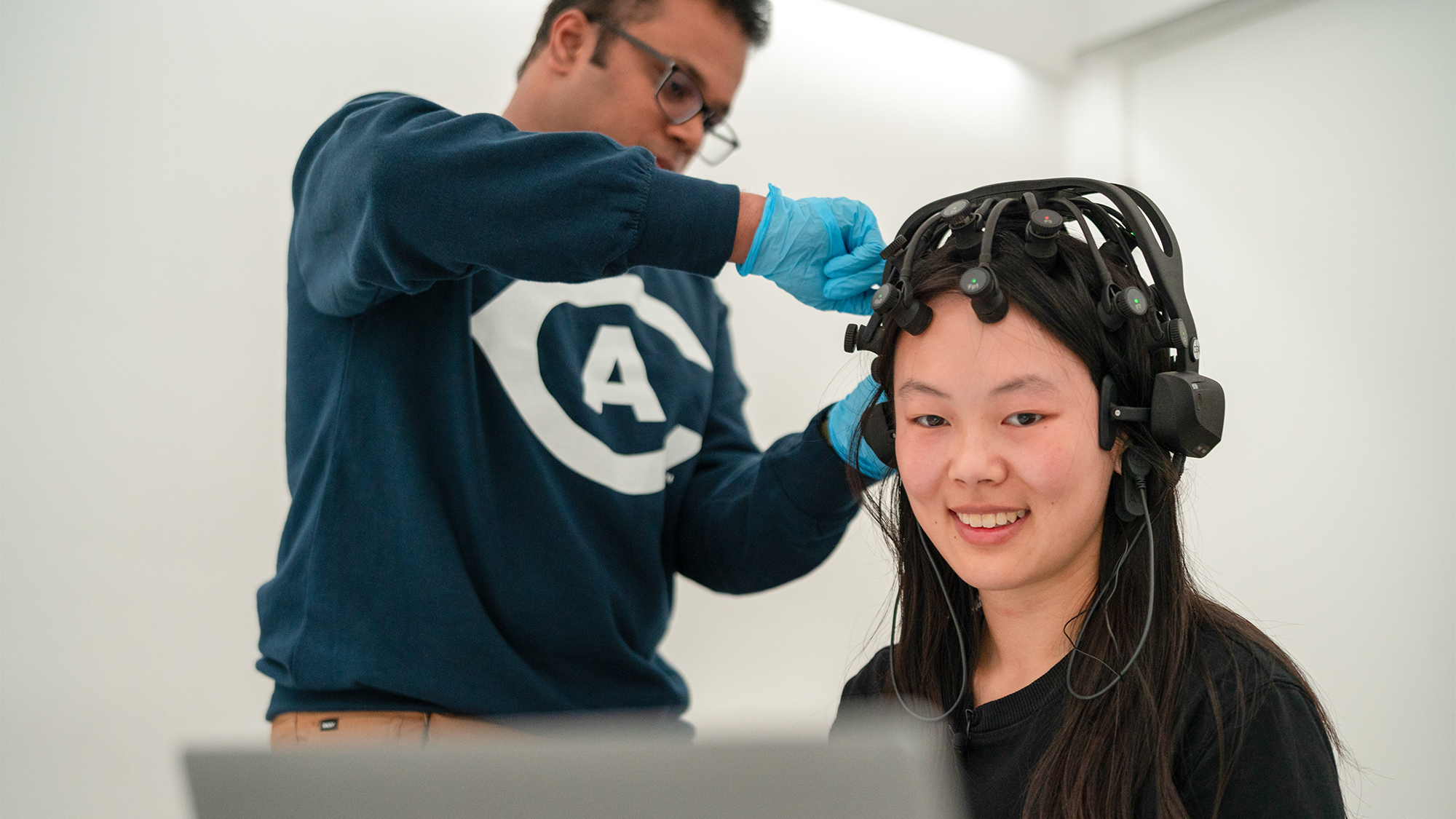Quick Summary
- Funding direct costs supports the expenses that can be specifically identified with a particular project such as researchers, supplies and travel.
- Funding indirect costs supports the critical infrastructure of a project, such as building operations, shared equipment and data security.
- Together, they make discovery possible and ensure public funds are used responsibly.
The From Labs to Lives Blog connects everyday topics with UC Davis research. Each post is reviewed by our experts, ensuring you always get useful information you can trust.
Every discovery begins with funding that makes research possible. Federal research grants provide that support, helping universities like UC Davis carry out studies that improve health, protect the environment and strengthen communities.
This funding helps to cover direct project expenses of research and portions of the shared institutional resources that keep it running safely and effectively, ensuring that public funding leads to real, lasting impact.
Why is federal research funding important?
Federal research funding supports important work across every field, helping to:
- Find cures for life-altering diseases like cancer
- Improve public health
- Protect the environment
- Advance heart and brain health
- Modernize agriculture
- Support innovative technology
When federal research funding is strong, universities can continue turning knowledge into solutions that improve lives, support communities and sustain a healthier, more resilient world.
Is federal research funding wasteful?
Federal research funding is closely monitored to ensure it is used responsibly and for public benefit.
Each grant undergoes a rigorous review process before it is awarded, and funded projects must meet strict reporting, auditing and compliance standards.
This oversight ensures public dollars support research that improves our lives and the lives of our loved ones.
What is a federal research grant?
A federal research grant is funding from the U.S. government that supports studies designed to expand knowledge and solve real-world problems.
These grants are awarded to universities, research institutions, hospitals and sometimes individuals. They help pay for the costs necessary to carry out research.
Each grant is approved for a specific purpose and includes reporting requirements to make sure funds are used responsibly.
They support research that benefits the public, such as advancing medicine, improving agriculture or developing new technology.
What type of grant is a federal research grant for universities?
Federal research grants for universities are usually discretionary grants. Discretionary research grants are awarded based on the quality and impact of each proposal.
Universities must apply and compete for funding. Federal agencies review proposals, score them on merit and decide what projects to fund.
These grants support research that benefits the public, such as advancing medicine, improving sustainability or developing new technology.
Do researchers profit from federal grants?
No, researchers don’t profit from federal grants. Rather, they provide reimbursement for the direct and indirect costs of research.

From Labs to Lives
Hear from UC Davis researchers about how federal funding supports the important work they do every day and what would happen if funding were cut.
What are direct costs?
Direct costs are the visible expenses of a project, things you can clearly connect to one study or experiment.
Examples of direct costs
- Salaries and benefits for researchers and lab staff
- Materials and lab supplies
- Participant stipends or incentives (if allowed)
- Project-related travel
What are indirect costs?
Indirect costs — also called Facilities and Administrative, or F&A, costs — keep people and data safe, making research possible every day.
Examples of indirect costs
- Building operations and maintenance
- Electricity and water
- Libraries and shared equipment
- Data security and IT infrastructure
- Compliance, safety and administrative support
Why do indirect costs exist?
Every research project depends on a network of people and systems that ensure research is being done safely, securely and in compliance with federal rules.
Indirect costs pay for the shared resources that protect human and animal subjects and keep facilities running day and night.
Are indirect costs ‘excessive overhead’?
No, indirect costs are not excessive overhead because they cover portions of the real expenses and infrastructure that make research possible.
Grants that cover indirect costs are necessary for faster solutions and innovation.
Who decides how much indirect funding a university gets?
Universities work with the federal government to set a rate. Agencies use that rate when they fund projects.
In other words, the rate reflects audited costs for running research programs.
Some universities have higher rates because of their location, the type of research they do or because their facilities are especially advanced or energy intensive.
Federal law requires agencies to honor these negotiated rates unless another law or policy caps them. Universities therefore subsidize a portion of the facilities and administrative costs associated with federally funded research.
Capping indirect cost rates vs. a new model
In 2025, the federal government tried to limit indirect cost rates to 15%. This cap was challenged in court because it did not reflect the true cost of running research programs.
Universities and scientific organizations argued that these limits would hurt research, lead to job cuts and slow innovation.
The Association of American Universities has pitched an alternative proposal called The Financial Accountability in Research Model.
The FAIR model would allow universities to define their own research categories and cost structures, which would be more effective and flexible than the current reimbursement model.
View our Federal Research Funding Executive Actions page for the latest information on research grant funding and applications.
How does UC Davis use indirect cost funding?
At UC Davis, indirect cost recovery helps pay for:
- Laboratory facilities, utilities and maintenance
- Research compliance and auditing systems
- IT security, data storage and communication networks
- Support services that allow researchers to focus on discovery
These costs form the infrastructure of research, the essential systems that make every experiment and study possible.
Review process
Reviewers
AJ Cheline, director of marketing and communications for UC Davis’ Office of Research, is responsible for developing strategies to increase global awareness of research and technology development at UC Davis.
Denise Ehlen, executive associate vice chancellor for research, oversees sponsored programs, finance and business operations, human resources, marketing and communications, technology transfer and information systems for UC Davis’ Office of Research.
Writer
Tatiana Muñiz is an SEO copywriter for UC Davis’ Office of Strategic Communications.
Editors
Jocelyn Anderson is a magazine editor for UC Davis’ Office of Strategic Communications.
Andy Fell is a news and media relations specialist for UC Davis’ Office of Strategic Communications.
